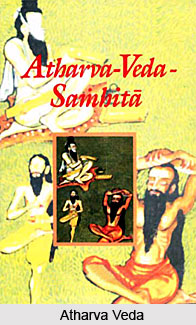 Pratisakhyas are part of the Vedangas of Vedic literature. Samhita Pathas and Pada Pathas, then, are the oldest productions of the Siksa schools. The oldest text-books of this Vedanga which have come down are the Pratisakhyas, which contain the rules by the aid of which one can form the Samhita Patha from the Pada Patha. Hence they contain instructions upon- the pronunciation, the euphonic alterations of the sounds in the composition of words and in the initial and final sound of words in the sentence, upon the lengthening of vowels- in short upon the whole manner of the recitation of the Samhita.
Pratisakhyas are part of the Vedangas of Vedic literature. Samhita Pathas and Pada Pathas, then, are the oldest productions of the Siksa schools. The oldest text-books of this Vedanga which have come down are the Pratisakhyas, which contain the rules by the aid of which one can form the Samhita Patha from the Pada Patha. Hence they contain instructions upon- the pronunciation, the euphonic alterations of the sounds in the composition of words and in the initial and final sound of words in the sentence, upon the lengthening of vowels- in short upon the whole manner of the recitation of the Samhita.
Every Sakha or recension of a Samhita has a text book of this nature. This is how the name Pratisakhyas came about, meaning `textbooks, each intended for a Sakha.` There is a Rig Veda Pratisakhya which is ascribed to Saunaka, a teacher of Asvalayana. This work is in verse, and is probably a later revision of an earlier Sutra text. The Taittiriya Pratisakhya Sutra, belongs to the Taittiriya Samhita; a Vajasaneyi Pratisakhya Sutra, ascribed to Katyayana, belongs to the Vajasaneyi Samhita, and the Atharva Veda Samhita has an Atharva Veda Pratisakhya Sutra, which is supposed to be of the school of the Saunakas. There is also a Sama Pratisakhya, and the Puspasutra is a kind of Pratisakhya to the Uttaragana of the Sama Veda. A further work dealing with the manner of singing the Samans at the sacrifice is the Panchavidha Sutra.
Importance of Pratisakhyas
The Pratisakhyas are of twofold importance. Firstly, they are important for the history of grammatical study in India as it commences with the Pratisakhyas. Even though they are not actually grammatical works themselves, they deal with subjects pertaining to grammar and the quotations from so many grammarians prove that the study of grammar was already flourishing at that time. Secondly, they are important as they are indicative of the fact that the texts of the Samhitas as they exist today have remained unaltered through all the centuries since the time of the Pratisakhyas. Thus the rules of the Rig Veda Pratisakhya take for granted that, at the period of the latter, the Rig Veda Samhita was not only firmly established in its division into ten Mandalas, but that even the order of the hymns in each Mandala was the same as it is now.
These Pratisakhyas are the earliest representatives of the Vedanga Siksa. Besides them, there are found more modern works, short treatises on phonetics etc which claim the title of Siksas and give famous names, such as Bharadvaja, Vyasa, Vasistha and Yajnavalkya as their authors. They follow the Pratisakhyas in the same way as, at later periods the law-books followed up the ancient Vedic Dharmasutras. Some of these Siksas are comparatively old and are more directly associated with some Pratisakhya or other, e.g. the Vasa Siksa with the Taittirioya Pratisakhya. On the other hand there are others of much later origin and of no importance either for grammar or for the history of the Vedic texts.
The Pratisakhyas are thus very important literary works of the Vedic period.



















